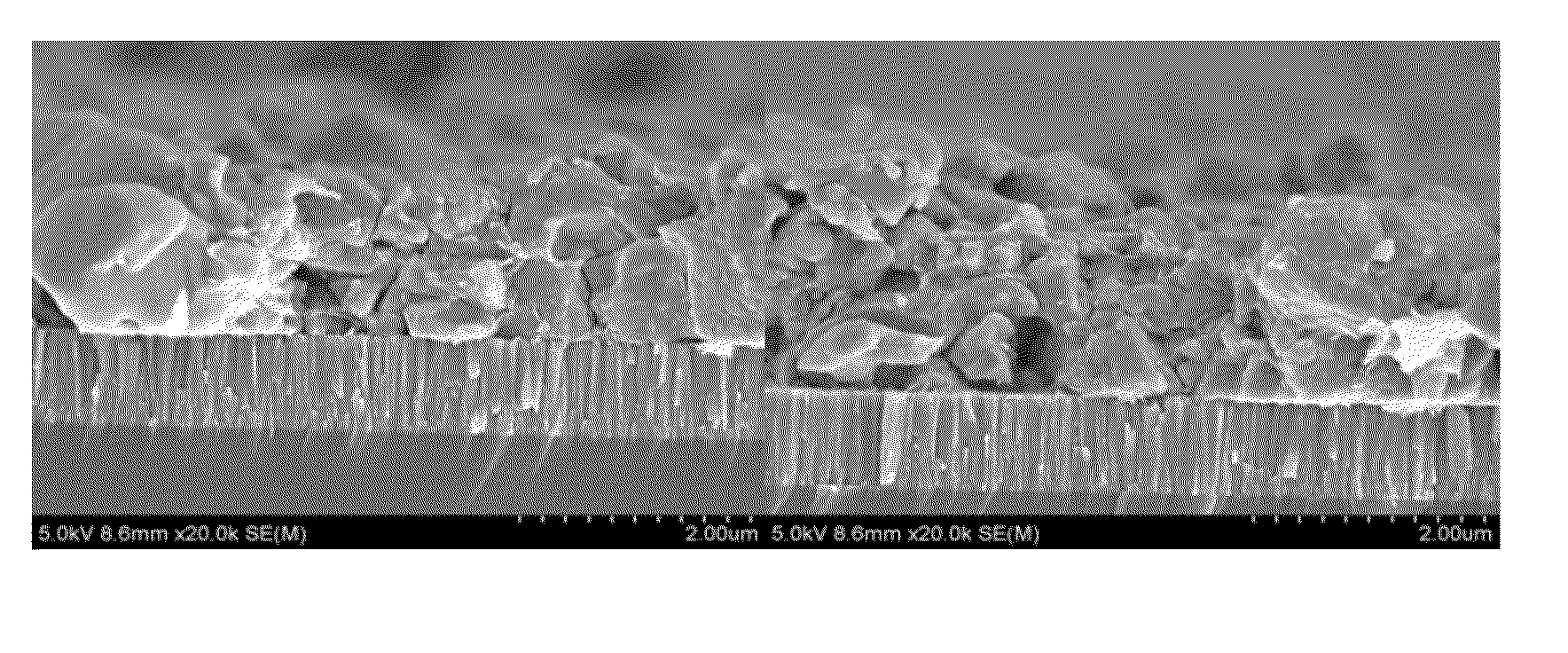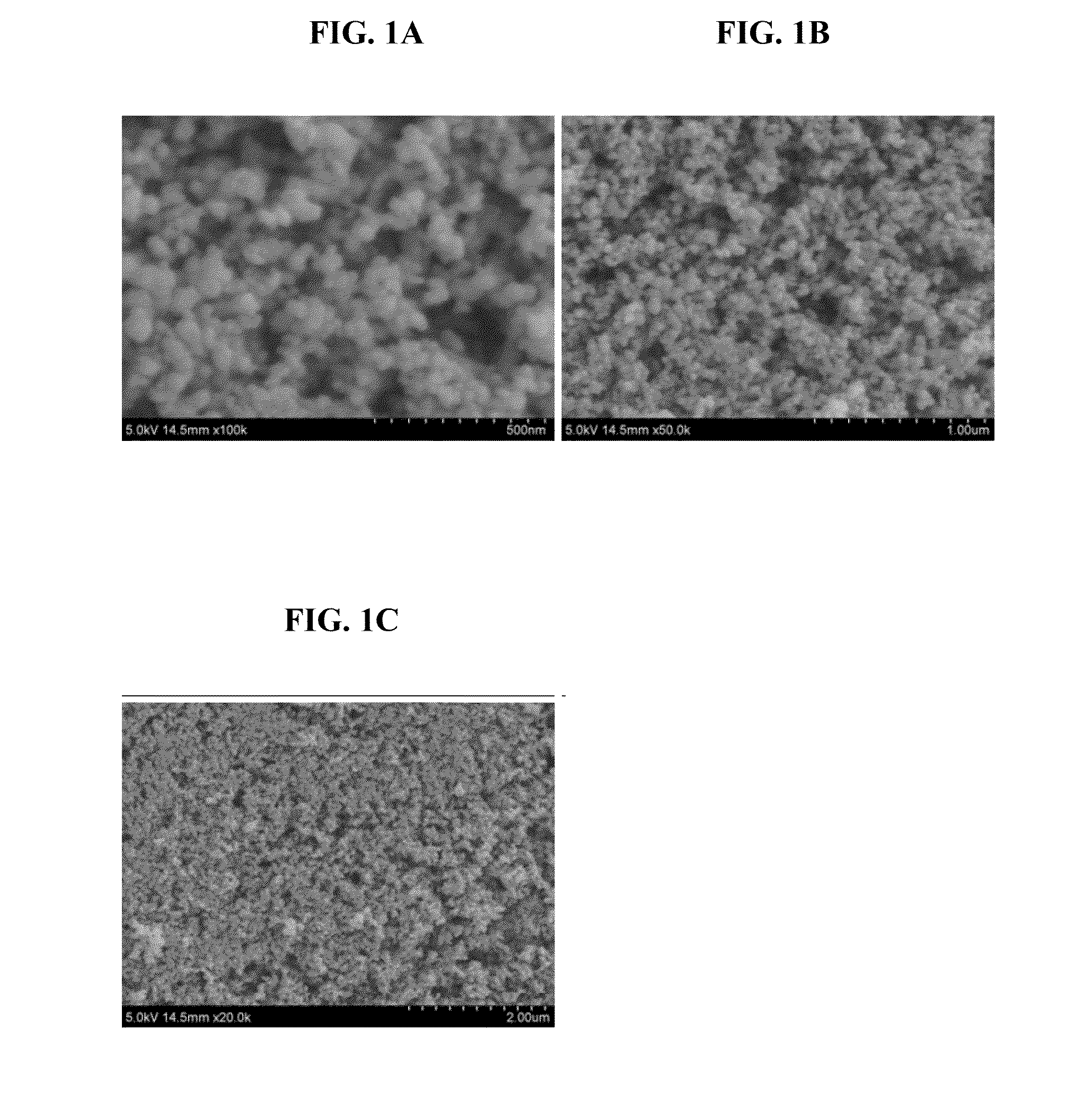Three-layer core-shell nanoparticles for manufacturing solar cell light absorption layer and method of manufacturing the same
a technology of solar cells and nanoparticles, which is applied in the direction of nanostructure manufacturing, transportation and packaging, inks, etc., can solve the problems of high manufacturing cost, application of thin film solar cells, and insufficient supply
- Summary
- Abstract
- Description
- Claims
- Application Information
AI Technical Summary
Benefits of technology
Problems solved by technology
Method used
Image
Examples
manufacturing example 11
Synthesis of CuS Particles
[0103]250 mL of an aqueous solution including 5 mmol of Cu(NO3)2 was heated to 170□ or more and then 50 ml of an EG solution including 10 mmol of thioacetamide was added dropwise. Subsequently, maintaining the temperature, the solution was reacted while stirring for 3 hours. Formed particles were purified through centrifugation, resulting in CuS nanoparticles.
manufacturing example 12
Synthesis of CuS Particles
[0104]200 ml of a DEG solution including 3 g of PVP was heated to 120□ or more and then 50 mL of a DEG solution including 10 mmol of thioacetamide was added dropwise thereto. Subsequently, 50 ml of a DEG solution including 5 mmol of Cu(NO3)2 was added dropwise and then, maintaining the temperature, the solution was reacted while stirring for 3 hours. Formed particles were purified through centrifugation, resulting in CuS nanoparticles.
manufacturing example 13
Synthesis of CuS Particles
[0105]200 mL of a DEG solution including 1 g of dodecylamine was heated to 120□ or more and then 50 mL of a DEG solution including 10 mmol of thioacetamide was added dropwise thereto. Subsequently, 50 ml of a DEG solution including 5 mmol of Cu(NO3)2 was added dropwise and then, maintaining the temperature, the solution was reacted while stirring for 3 hours. Formed particles were purified through centrifugation, resulting in CuS nanoparticles. A scanning electron microscope (SEM) image and X-ray diffraction (XRD) graph for the formed particles are illustrated in FIGS. 1 and 2.
PUM
| Property | Measurement | Unit |
|---|---|---|
| diameter | aaaaa | aaaaa |
| molar ratio | aaaaa | aaaaa |
| molar ratio | aaaaa | aaaaa |
Abstract
Description
Claims
Application Information
 Login to View More
Login to View More - Generate Ideas
- Intellectual Property
- Life Sciences
- Materials
- Tech Scout
- Unparalleled Data Quality
- Higher Quality Content
- 60% Fewer Hallucinations
Browse by: Latest US Patents, China's latest patents, Technical Efficacy Thesaurus, Application Domain, Technology Topic, Popular Technical Reports.
© 2025 PatSnap. All rights reserved.Legal|Privacy policy|Modern Slavery Act Transparency Statement|Sitemap|About US| Contact US: help@patsnap.com



